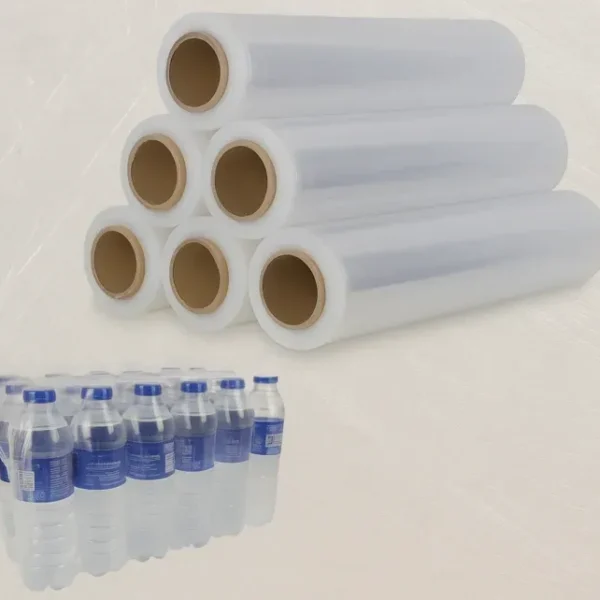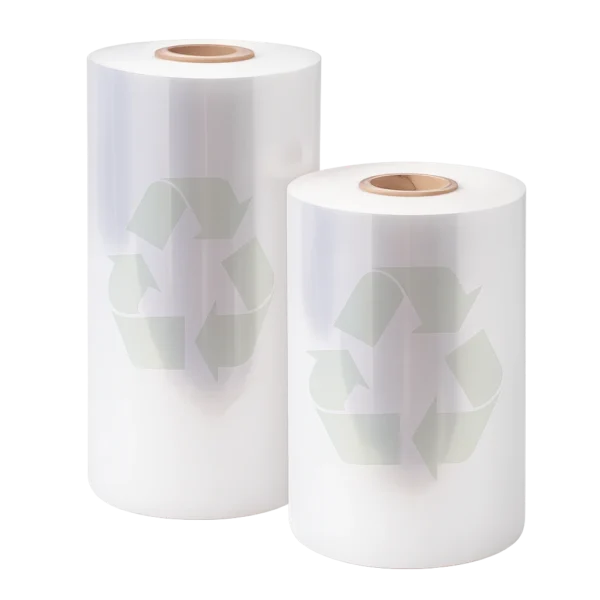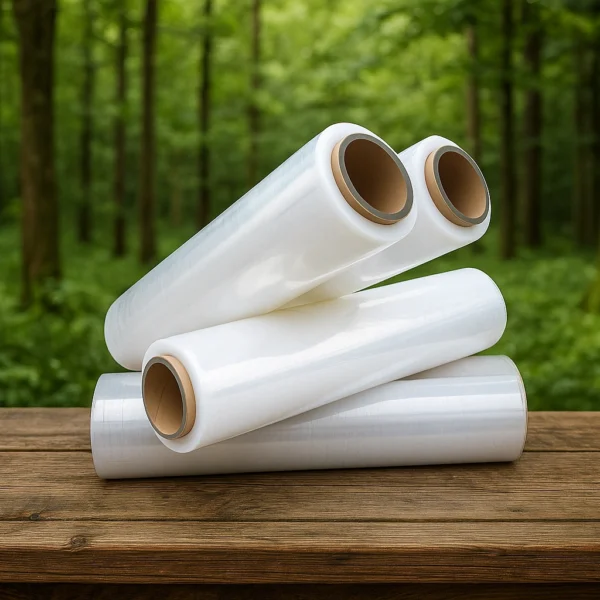Plastic Films
Plastic Film Buying Guide
The main challenge for business owners is often choosing the right plastic film for packaging their products. It is important to note that the range of plastic films is very broad and complex. This complexity increases when we realize that there is a significant overlap of information among different products. For example, there is no boundary for the applications of plastic films! This means that each type of plastic films can be used in similar industries with comparable applications. As a result, individuals often face problems in choosing the right product. Everyone has specific expectations regarding the desired product; some prioritize price, while others focus on quality and application. In general, we are faced with varying needs in relation to similar-looking products that might serve the same purpose but differ in reality! Our goal in this article is to help the audience eliminate existing ambiguities and guide them so they can choose the best product for their needs.
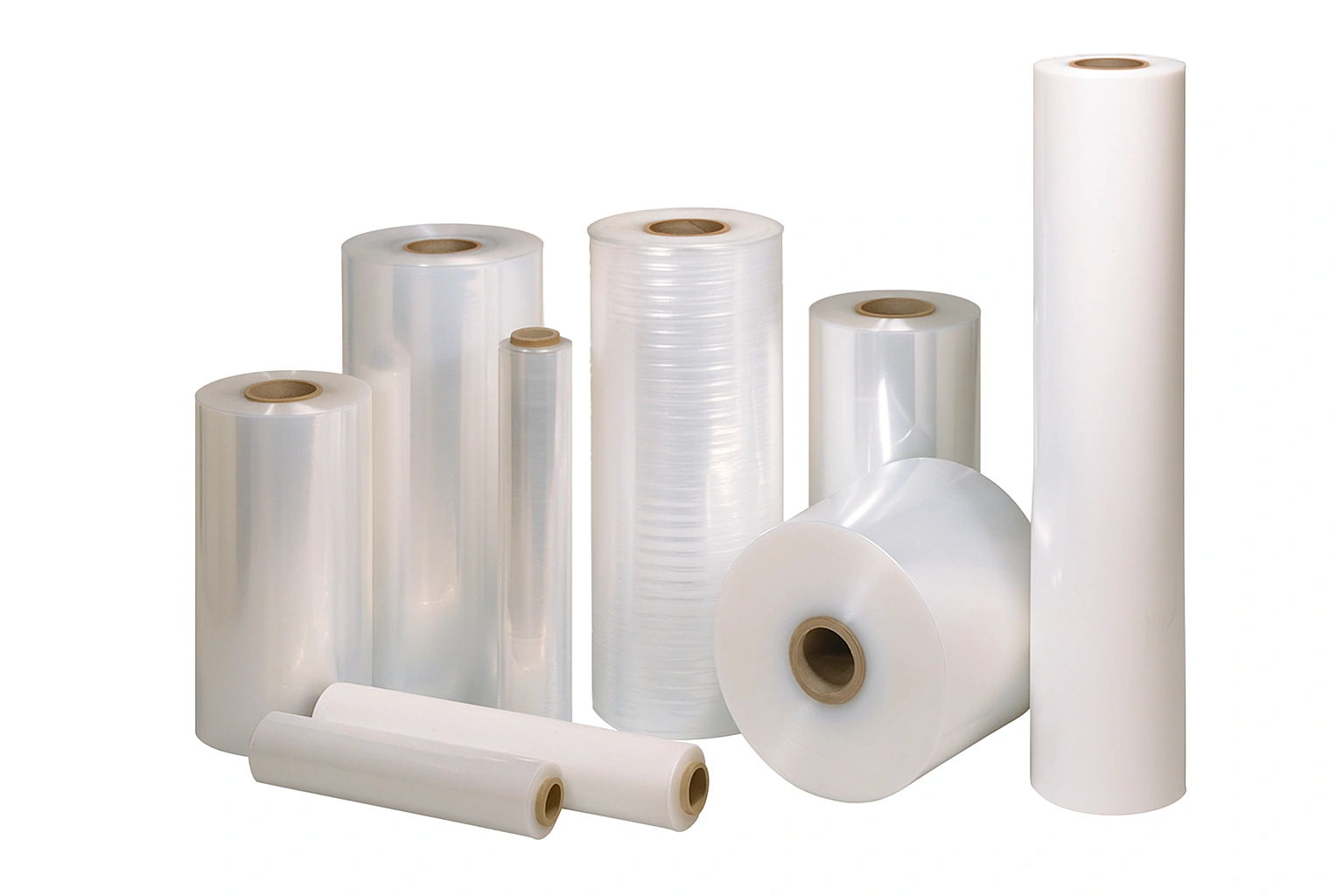
What is Plastic Film?
Plastic films are thin polymer layers that are marketed in rolls. Depending on the type of application and the needs of industries, they can be produced from various polymer bases such as PP, PE, PVC, etc. Additionally, plastic films are available in various thicknesses, ranging from approximately 0.06 millimeters to 0.25 millimeters. Due to their multiple properties, this product is widely used in various industries. The primary role of this film is to package and protect diverse goods, which ranges from food items to industrial components. Films possess flexibility, high physical resistance, adhesion, and several other features.
How can we obtain the appropriate plastic film?
To select the right and suitable product, consumers must first clarify their criteria and priorities. By following these steps, you can establish specific filters for yourself to make the purchasing process simpler.
Define your industry and product
Although most industries use plastic film for packaging, the needs of manufacturers vary! Identifying the product is important for selecting plastic film because different products (e.g., food, industrial, etc.) must each be packaged under specific conditions. Sometimes, we need packaging that has a high printing capability, or we require it to have high resistance, etc.
Example: Electronics industry, product: Printed Circuit Boards (PCB)
Determine the environment in which your product should be stored and what challenges it faces. In the table below, some challenges faced by industries in the field of packaging are compiled:
| Industry | Humidity and Condensation | Dust and Pollution | Temperature and Thermal Changes | Other Specific Challenges |
|---|---|---|---|---|
| Agriculture | Increase of microplastics in soil and crops | Soil and water source pollution | Impact of temperature changes on plastic performance | Environmental concerns and plastic recycling |
| Food | Microbial growth and product spoilage | Cross-contamination in the packaging process | Need to maintain appropriate temperature for preservation | Migration of chemicals from plastic to food |
| Industrial Parts | Corrosion and damage to metal parts | Entry of particles into sensitive mechanisms | Effect of temperature on mechanical properties of plastic | Need for high mechanical resistance in packaging |
Example: Sensitivity to ESD, the need for protection against moisture and dust, the need for thermal sealing capability.
Define the characteristics that a packaging film must have.
Now it’s time to specify your expectations from the plastic film based on your industry and product. What are your technical parameters? What materials should the product be made from? Which properties have a higher priority for you? In the film characteristics section, we have explained some of the main features, from which you can select your required items. If there are other needs besides those mentioned, feel free to add them to your list.
Example: A film that has surface resistance, a thickness of approximately 50 to 100 microns, tear resistance, thermal sealing capability, Dri-Shield® 3700 film.
Compliance with standards and regulations
Different countries may have various laws and standards. Producers must be aware of these standards to check for compliance when selecting a product. Some countries even prevent the import of these plastic films into their domestic market due to a lack of necessary standards! Some of the standards include: ASTM D882, ISO 527, ASTM F2029, and more.
Example: ESD standards, health and environmental permits.
Specify your budget range and purchasing ability
Now it’s time to determine your budget for acquiring the suitable film, which depends on the target demographic you intend to produce the product for. Are you looking for a simple and economical packaging, or a super high-quality packaging?
Example: Economical packaging.
Choosing the desired film based on the mentioned needs
In the types of plastic films section, we have categorized various types of these products. You can determine the appropriate film based on the information you have collected so far. Is shrink film more suitable for you, or stretch film?
Example: Anti-static PET film.
In conclusion
An anti-static PET film with a thickness of approximately 50 to 100 microns, thermal sealing capability, and ESD standards along with health and environmental permits in economical packaging.
By using this method, you can find your desired product among a plethora of varieties and similarities!
Types of Film Plastic (A solution for tangled threads!)
As mentioned, distinguishing and differentiating plastic films from each other is a very difficult and complex task. Based on the application and material of the products, we can consider a general categorization for this product:
Shrink Film
This film shrinks when heat is applied and completely adheres to the surface of the product. This feature protects the product against dust, moisture, and physical damage. Shrink films are usually made from polyolefin (POF), polyvinyl chloride (PVC), or polyethylene (PE) and are used in the packaging of food, pharmaceutical, and industrial products.
Stretch Film
Stretch film is produced from low-density polyethylene (LLDPE) and has high elasticity. This film is used for wrapping and palletizing goods and helps protect items against potential damage during transportation and storage. Stretch films are available in both manual and machine types.
Polypropylene Film (PP)
Polypropylene films can include BOPP, CPP, and OPP. Due to their high clarity, moisture resistance, and suitable tensile strength, they are used in the packaging of food, pharmaceutical, and hygiene products. These films are also suitable for packaging that requires sterilization due to their high melting point.
Polyethylene Film (PE)
Polyethylene films are produced in several types, including high-density (HDPE) and low-density (LLDPE, BOPE, LDPE). HDPE films are harder and suitable for packaging that requires shape retention. LDPE films are softer and more flexible, used in general and agricultural packaging.
The table below outlines the key differences of these films for easier identification.
| Feature / Type of Film | Shrink Film | Stretch Film | Polypropylene (PP) Film | Polyethylene (PE) Film |
|---|---|---|---|---|
| Polymer Base | Polyolefin (POF), Polyvinyl Chloride (PVC) | Low-density Polyethylene (LLDPE) | Polypropylene (PP) | High-density (HDPE) or Low-density (LDPE) |
| Typical Thickness (Microns) | 15–30 | 12–50 | 20–40 | 20–100 |
| Transparency | High; glossy and transparent | High; allows viewing contents | Very high; suitable for displaying product | Medium to high; depends on HDPE or LDPE |
| Tear Resistance | Moderate; sensitive to puncture in sharp points | High; suitable for heavy and bulky packaging | High; good tear resistance | High; especially in HDPE |
| Tensile Strength | Low; shrinks after heating | Very high; up to 300% stretch | Low; limited flexibility | Moderate; depends on HDPE or LDPE |
| Thermal Resistance | Needs heat for shrinking; sensitive to high temperatures | Resistant to usual heat; sensitive to very high temperatures | Resistant to heat; suitable for sterilization | Resistant to heat; suitable for various packaging |
| Moisture Resistance | High; effectively protects against moisture | High; prevents moisture penetration | High; suitable for moisture-sensitive products | High; especially in LDPE |
| Recyclability | Limited; depends on raw material | High; especially in polyethylene films | High; recyclable and environmentally friendly | High; especially in LDPE |
| Usage Method | Requires heating device (hot tunnel or heat gun) for shrinking | Hand or machine wrapping; no heat needed | Used in horizontal and vertical packaging machines; no heat needed | Used in various packaging machines; no heat needed |
| Common Applications | Bottles, cans, food products, books, magazines, fruits and vegetables | Pallet wrapping, boxes, furniture, industrial and agricultural products | Food, pharmaceutical, hygiene, and cosmetic packaging; suitable for transparent display | Food, agricultural, industrial, and construction packaging; suitable for bags and wraps |
| Advantages | Stylish, glossy appearance; effective protection against dust and moisture; suitable for retail packaging | High elasticity; tear resistance; protection against moisture and dust; suitable for transport and storage | Very high transparency; resistance to moisture and heat; high-quality packaging | High resistance to moisture and chemicals; good flexibility; high recyclability |
| Disadvantages | Needs heating equipment; sensitive to punctures; more expensive than stretch film | Sensitive to sharp objects; may lose adhesiveness at high temperatures | Less flexible than PE; may be vulnerable to severe impacts | Less transparency than PP; may deform at very high temperatures |
Features of Plastic Films
Product Protection
Plastic films are designed to protect their contents in a multilayer structure; the inner layers are usually made of PE or PP, while the intermediate layers consist of materials such as EVOH or PET that have high barrier properties. The zigzag molecular structure of EVOH reduces the passage of oxygen; these barrier layers prevent the ingress of water and oxygen molecules and, by adding nanoscale coatings, they prevent the entry of microbes and dust.
Increased Shelf Life
To maintain the freshness of food and pharmaceutical products, the packaging film must create a controlled environment; that is, it should limit the ingress of oxygen while allowing the carbon dioxide produced during the respiration of the product to escape. By using EVOH and NP (nanofiltration) layers, the gas permeability coefficient is adjusted. This balance allows products like leafy vegetables or red meat to remain fresh for up to twice as long as usual without losing quality.
Cost Reduction
Polymer products are often cost-effective and economical; plastic films are no exception to this rule and they offer more appeal to manufacturers compared to other methods. Given the possibility of high-volume production, reduced waste, and less need for double packaging, the final packaging cost is often 15–30% lower than alternative options such as aluminum sheets or glass.
Printability
BOPP and CPP films have a smooth and uniform surface that allows for even and high-resolution absorbance of printing inks. These films enable intricate detail printing and vibrant colors up to 8 colors. Additionally, by adding a primer layer or anti-slip coating, the issuance of food certifications (such as printing with oil-free inks) can also be guaranteed.
Flexibility
Low-density polyethylene (LDPE) films have a low tensile modulus (MD) of about 150–200 MPa. This property allows the film to wrap closely around products with irregular shapes, such as angled bottles or industrial parts. At the same time, additives like silica nanoparticles or reinforcing masterbatches can increase tear resistance to over 200 N/mm, ensuring safety against mechanical stresses and puncturing.
Applications of Plastic Films in Industries
Food Industry
Polypropylene (PP) Film: Due to its high clarity and moisture resistance, it is suitable for packaging food products such as biscuits, jellies, and vegetables.
Polyethylene (PE) Film: Used in the packaging of frozen food and agricultural products.
Shrink Film: Used for bulk packaging of products like bottles and cans.
Reasons for selection
Preserving freshness and extending the shelf life of food products.
Protection against environmental contaminants and moisture.
Pharmaceutical Industry
Polypropylene (PP) Film: Used for packaging pharmaceutical products and medical equipment due to its moisture and contamination resistance.
Reasons for selection
Maintaining sterility and preventing contamination of medical products.
High clarity for inspecting package contents.
Agricultural Industry
Polyethylene (PE) Film: Used for covering greenhouses and agricultural land to control temperature and humidity.
Mulch Films: Used to prevent weed growth and maintain soil moisture.
Reasons for selection
Increasing productivity in agriculture.
Reducing water and chemical consumption.
Electronics Industry
Antistatic Films (ESD): These films, with their antistatic properties, prevent electrostatic discharges that could damage sensitive circuits and chips. Their use in packaging electronic components like printed circuit boards, chips, and memory is common.
Polyolefin (POF) Films: These films create a protective layer against moisture, dust, and mechanical damage to electronic components. Furthermore, some types of polyolefins have antistatic properties, making them suitable for packaging sensitive parts.
Reasons for selection
Protecting electronic components from electrostatic discharges (ESD) that could damage their performance. Preventing moisture and dust infiltration that may lead to rusting or failure of components. Increasing the lifespan of components by reducing mechanical damage during transportation and storage.
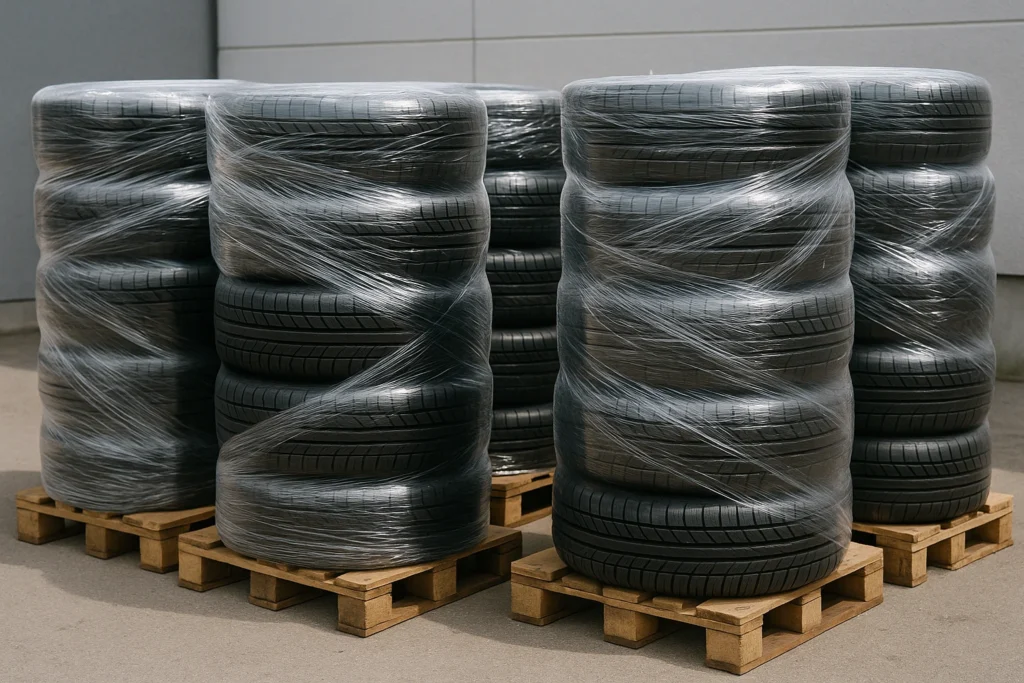
Ordering and Purchasing
Supra Polymer Company, leveraging advanced technologies and a specialized team, offers various types of high-quality plastic films at competitive prices. For bulk purchasing and orders, you can contact Super Polymer’s sales experts and benefit from specialized consultation. Link
Showing 1–18 of 34 resultsSorted by latest
-

Printable Shrink FilmShrink Film Wholesale
-

Recyclable Shrink FilmEco Friendly Shrink
-

Biodegradable Shrink FilmEco Friendly Shrink
-

Reusable Stretch FilmEco Friendly Stretch
-

Biodegradable Stretch FilmEco Friendly Stretch
-

Heavy Duty Stretch filmStretch Film Wholesale
-

20″ x 6500′ Machine Stretch FilmMachine stretch Film
-

20″ x 4000′ Machine Stretch FilmMachine stretch Film
-

20″ x 5000′ Machine Stretch FilmMachine stretch Film
-

30″ x 5000′ Machine Stretch FilmMachine stretch Film
-

40″ x 5000′ Machine Stretch FilmMachine stretch Film
-

50″ x 5000′ Machine Stretch FilmMachine stretch Film
-

60″ x 5000′ Machine Stretch FilmMachine stretch Film
-

70″ x 5000′ Machine Stretch FilmMachine stretch Film
-

20″ x 3000′ Machine Stretch FilmMachine stretch Film
-

20″ x 6000′ Machine Stretch FilmMachine stretch Film
-

18″ x 2000′ Hand Stretch FilmHand Stretch
-

18″ x 1000′ Hand Stretch FilmHand Stretch

